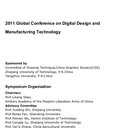Functionality of microbial communities in constructed wetlands used for pesticide remediation: Influence of system design and sampling strategy.
Ключевые слова
абстрактный
The objective of this study was to compare the microbial community metabolic function from both unsaturated and saturated constructed wetland mesocosms (CWs) when treating the pesticide tebuconazole. The comparison was performed for both interstitial water and substrate biofilm by community level physiological profiling (CLPP) via BIOLOG™ EcoPlates. For each CW design (saturated or unsaturated), six mesocosms were established including one unplanted and five planted individually with either Juncus effusus, Typha latifolia, Berula erecta, Phragmites australis or Iris pseudacorus. Microbial activity and metabolic richness of interstitial water from unsaturated CWs were significantly lower than that from saturated CWs. However, in general, the opposite result was observed for biofilm samples. Wetland plants promoted significantly higher biofilm microbial activity and metabolic richness than unplanted CWs in both CW designs. Differences in the microbial community functional profiles between plant species were only found for saturated CWs. Biofilm microbial metabolic richness was generally statistically higher than that of interstitial water in both unsaturated (1.4-24 times higher) and saturated (1.2-1.7 times higher) CWs. Carbon source (guild) utilization patterns were generally different between interstitial water and biofilm samples. Functionality of the biofilm microbial community was positively correlated to the removal of all pollutants (TN, NH4+-N, TP, TOC and tebuconazole) for both unsaturated and saturated CWs, suggesting the biofilm plays a more important role in pollutant removal than the interstitial water microbial community. Thus, merely observing the interstitial water microbial communities may underestimate the role of the microbial community in CW performance. Interestingly, the ability for the biofilm microbial community to utilize amino acids and amines/amides was positively correlated with tebuconazole removal in all system types.





